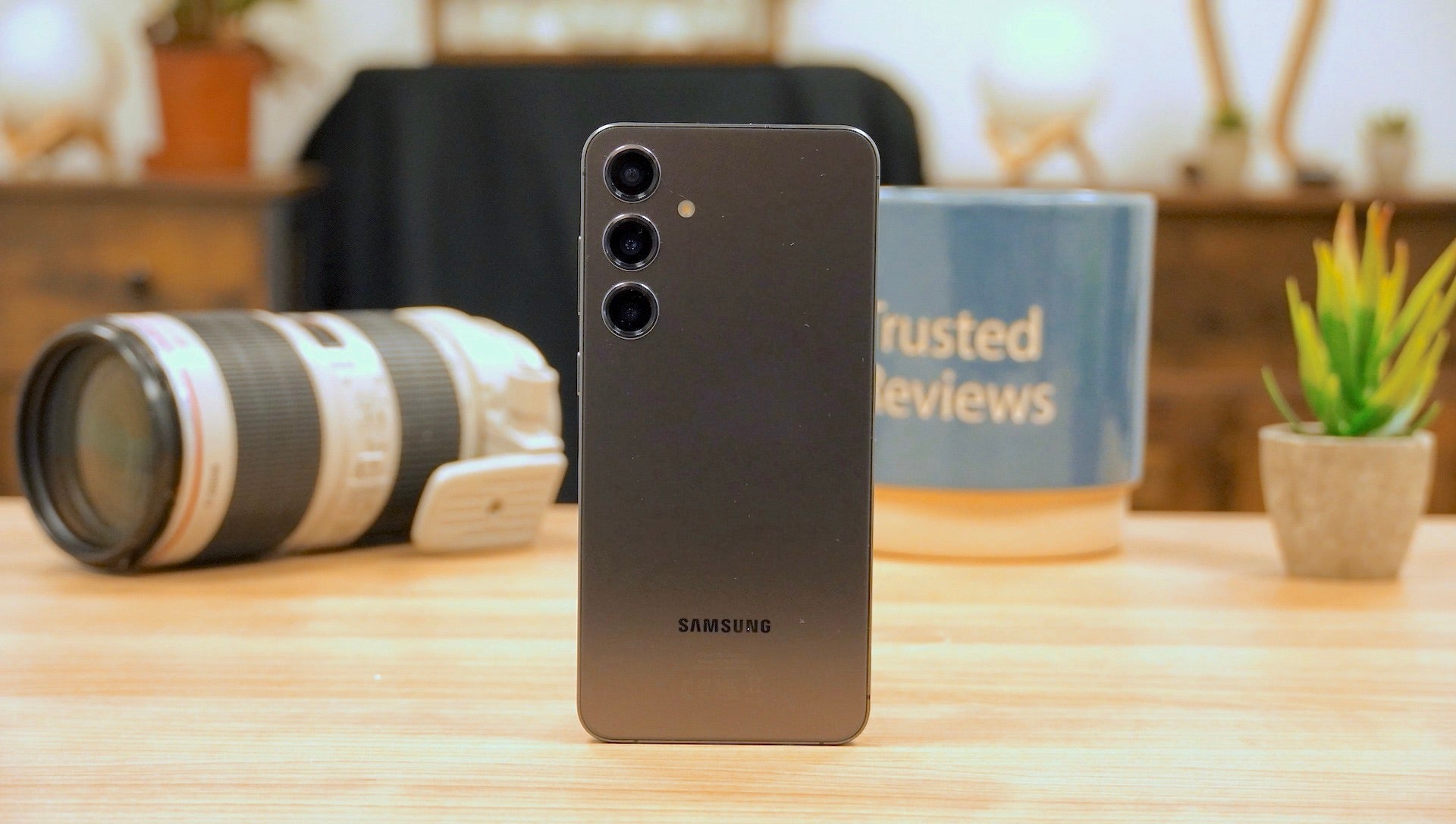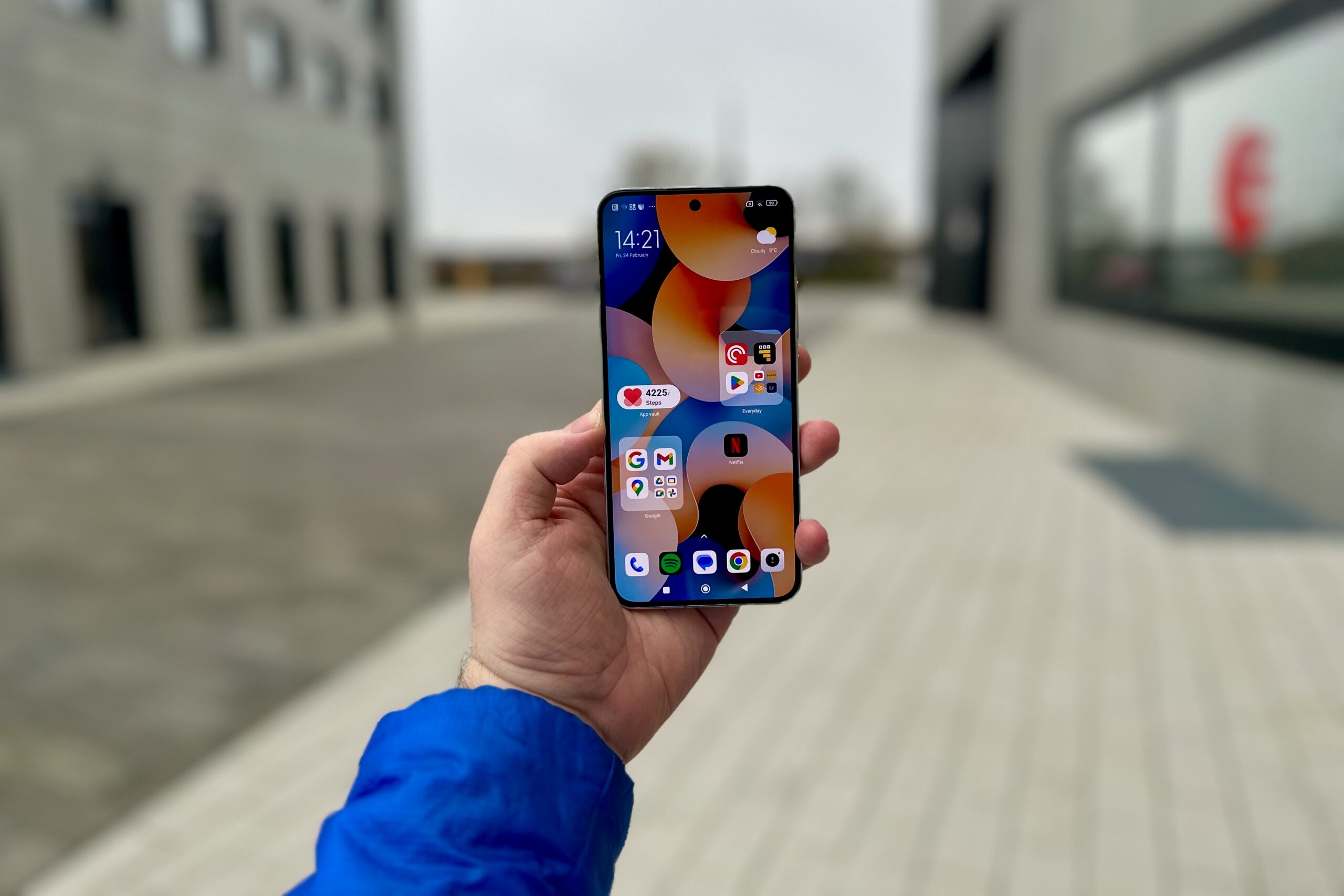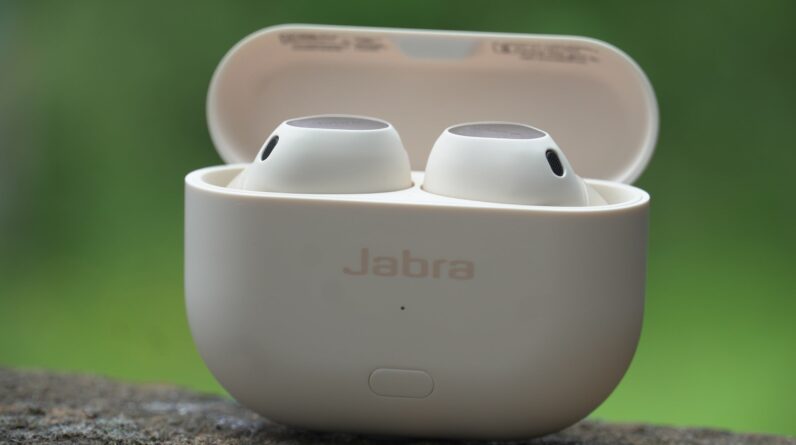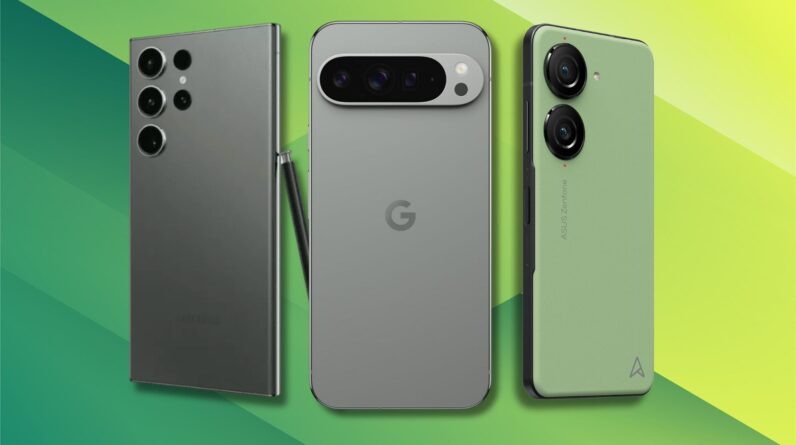
Finding a new Android phone can be quite the task in 2024, with so many tempting options available at a variety of price points.
That’s where we at Trusted Reviews come in. Our team of experts has meticulously reviewed a wide range of Android phones, from budget blowers to top-end temptations. Our comprehensive testing process involves thorough real-world and benchmark testing covering performance, battery life, camera performance, and much more. Testing lasts at least a week, but often longer.
Based on our findings, we assign each phone a rating out of five, with the highest-scoring devices considered for inclusion in our esteemed list. Only the very best Android phones on the market in 2024 make it into this list, so you know whatever you decide on will deliver a great experience.
Of course, there’s no one-size-fits-all when it comes to Android smartphones. Some are better at capturing those Instagram-worthy snaps, while others deliver blisteringly fast performance for top-end mobile gaming. There’s also form factor to consider, from compact smartphones to big-screen foldables. That’s why we’ve assigned each product with a specific award, helping you find the best for your needs.
If you have a more specific craving for your smartphone, then it’s worth checking out our best camera phone, best gaming phone and best mid-range phone guides which offer more tailored recommendations. And if you want to see how the very best Android phones compare to Apple’s iPhones, then have a look at our best phone roundup.
Best Android phones at a glance
How we test
All the phones included in our Best Android phone list have been thoroughly tested and used by one of our expert reviewers. We will never review a phone based purely on specs and benchmark scores. We use them as our everyday device for the review period, which is usually at least five days but often a lot more.
Whenever you read a phone review published on Trusted Reviews, you should be confident that the reviewer has put their personal SIM card into the phone, synced across their most-used apps and logged into all their typical accounts. We do this so you’ll feel confident in our review and trust our verdict.
Our review process includes a mixture of real-world tests, along with more than 15 measured tests and industry-standard benchmarks. We believe this gives the most rounded view of a device.
Google Pixel 9 Pro XL
Best camera
Pros
- Redesigned chassis looks way more modern
- Holistic, genuinely helpful approach to AI
- Amazing photo and video capabilities
- All-day battery life
Cons
- Second price hike in two years
- Can get hot when gaming
- Tensor G4 isn’t much more powerful than the G3
If you’re shopping for an Android phone and want the best camera experience possible, the Pixel 9 Pro XL is our current favourite pick. It’s not better in all respects than the Samsung Galaxy S24 Ultra, but it does cost less and packs a lot of clever AI features our reviewer actually used.
As with any Pixel phone, the 9 Pro XL is mostly about two things – the Google software and the camera. The cameras remain fairly similar to what we saw on the Pixel 8 Pro, but refreshed tech including larger zoom and ultrawide sensors and new AI smarts brings improved performance to all three of the rear lenses. There are software tweaks too, including a bunch of updated modes – including Night Sight Video – you’ll actually want to use.
Photos from the phone are great in practically any scenario. They are richer and more immersive than those from the Galaxy S24 series and often better in darker situations, too, despite the much higher megapixel count on offer from the S24 Ultra in particular. The zoom might not match up to Samsung’s Ultra efforts, but if you keep it to around the 5-10x mark, the results are great.
Powering the phone is Google’s Tensor G4 chipset, though like previous entries, it’s not the quickest around – many phones on this list post better benchmark scores – with the focus being instead on AI prowess.
Many software additions here are made better by this chip, including support for on-device Google Gemini smarts, the ability to search for Screenshots using natural language and even generate new images entirely on-device, and everything works very well. Samsung has started to claw back some of that interest with Galaxy AI on the S24 series, but there’s still more to take advantage of with the Pixel 9 Pro XL than the S24.
The 6.8-inch Super Actua screen is on par with high-end options from Apple and Samsung, although battery life is starting to lag behind the competition. The Pixel 9 Pro XL is also more expensive than the Pixel 8 Pro, with the new regular Pixel 9 Pro offering pro-level smarts in a smaller 6.3-inch package.
Reviewer: Lewis Painter
Full review: Google Pixel 9 Pro XL Review

Samsung Galaxy S24 Ultra
Best display
Pros
- Genuinely useful AI features
- Versatile camera setup
- All-day battery life and then some
- Seven years of OS upgrades
Cons
- Very expensive
- Average ultrawide camera
If you’re looking for the very best big-screen experience possible, look no further than Samsung’s top-end Galaxy S24 Ultra. It’s the option to choose if you want a really high-end, luxury experience that does it all – and are happy to pay for the privilege.
The S23 Ultra may not look all that different from 2023’s S23 Ultra, but small key differences vastly change the experience. That includes a shift from aluminium to titanium for the chassis, much slimmer bezels for a true all-screen look and, of course, the move from a curve display to a flat one – a change that’ll benefit S Pen users in partoiucalr, allowing you to make the most out of the 6.82-inch Dynamic AMOLED 2X screen.
That screen is one of the main reasons to opt for the Ultra, and it’s packed with premium bells and whistles with its WQHD+ resolution, dynamic 120Hz refresh rate and support for HDR10+ and Dolby Vision delivering a stunning viewing experience whether you’re scrolling through TikTok or watching the latest Hollywood blockbuster on Netflix
It’s not just simply a big phone though; the S24 Ultra stands out in the camera department, particularly when it comes to zoom prowess. It’s a title that Samsung continues to hold with the S24 Ultra despite an apparent downgrade from a 10x periscope to a 5x periscope, but the inclusion of a higher-res sensor and OIS mean that performance is near-identical at the 10x level whilst vastly boosting the 5-10x mark compared to the previous gen phone.
That’s backed up by a 200MP primary camera that delivers vibrant, detailed and well-balanced images regardless of light levels and also allows for a dedicated astrophotography mode. There’s also a 12MP ultrawide and 10MP 3x telephoto rounding out the rear camera system, making it a versatile system indeed.
The S24 Ultra stands out in another way, however; Galaxy AI. While it’s not quite as well-rounded as the Pixel 8 Pro offering, elements like rewriting text, transcribing and translating recordings and limited photo editing features hint that Google’s time as the top AI phone could be running out.
That’s down to the Snapdragon 8 Gen 3 for Galaxy, a custom version of the 2024 chipset that delivers top-end performance and the ability to process generative AI tasks all on-device without an internet connection.
Throw in all-day battery life with a 5,000mAh battery, seven years of OS upgrades taking it through to Android 21 and solid software from OneUI 6.1 and you’ve got a tempting – if not pricey and large – smartphone.
Reviewer: Lewis Painter
Full review: Samsung Galaxy S24 Ultra Review

Honor Magic 6 Pro
Best battery life
Pros
- Premium, eye-catching design
- Brightest display around at 5000nits
- Impressive camera performance from all lenses
- Snapdragon-powered performance
Cons
- MagicOS 8 is basically an iOS dupe
- MagicPortal is pretty barebones at the moment
- No charger in the box
If you’re in the market for a phone with enduring battery life, the Honor Magic 6 Pro is an excellent choice. This top-tier device competes with the Galaxy S24 Ultra not just in screen and camera technology but also with its substantial 5,600mAh silicon-ion battery, which offers extended longevity and superior performance in colder climates.
The Magic 6 Pro’s 6.8-inch curved AMOLED display is a marvel, featuring curved edges, a silky 120Hz refresh rate, and numerous eye-care options, ensuring a delightful viewing experience whether you’re watching Netflix or scrolling through TikTok, all with a peak HDR brightness of 5000 nits.
Its camera system is equally impressive, with the primary 50MP camera providing a remarkable dynamic range thanks to a bespoke HDR sensor and a variable f/1.4-f/2.0 aperture. The 180MP periscope lens, boasting the highest resolution and largest sensor of its kind, delivers extraordinary zoom capabilities with minimal detail loss, even at high magnification levels.
The 5,600mAh battery is a standout feature, constructed from eco-friendlier silicon-ion instead of traditional lithium-ion, enhancing performance in low temperatures. Its capacity surpasses most competitors, ensuring all-day usage and nearly two days of battery life before needing a recharge.
Coupled with the Snapdragon 8 Gen 3 processor, 80W fast charging, facial recognition technology on par with the iPhone, and an appealing design, the Magic 6 Pro is a well-rounded powerhouse.
Reviewer: Lewis Painter
Full review: Honor Magic 6 Pro Review

Motorola Razr 50 Ultra
Best flip-style foldable
Pros
- Biggest cover screen around
- Stylish, colourful design
- IPX8 water resistance
Cons
- No ultrawide camera
- Middling long-term software promise
- Not quite the most powerful processor around
The Razr 40 Ultra from 2023 took the clamshell foldable crown from Samsung’s Z Flip 5, and the Razr 50 Ultra is here to make sure it stays that way, improving on the already strong offering of last year’s foldable with an even bigger 4-inch cover display that takes up the entire panel, but there’s more to it than being big.
As with last year’s Razr 40 Ultra, you can use the cover screen to not only access a range of Motorola-designed widgets but full-blown Android apps, allowing you to get Google Maps directions, control smart lighting and even reply to WhatsApp messages without having to unfold. This not only reduces the need to open the device frequently but also makes it comfortable to use in its folded form.
However, you won’t always rely on the external display, especially with the presence of a tall, narrow 6.9-inch pOLED display inside. This screen is incredibly smooth at 165Hz and incorporates LTPO technology, intelligently adapting the refresh rate based on your activities.
The cameras have also had a serious boost for 2024, with a dual 50MP offering comprised of a main f/1.7 lens and a high-res 2x telephoto – though that comes at the expense of an ultrawide lens. Still, the combination of lenses proved a strong point in testing, with vibrant colours, plenty of detail and great low-light capabilities, though it did struggle to capture particularly vibrant sunsets.
Powering the phone is the Snapdragon 8s Gen 3 that, while not quite as powerful as the Z Flip 6’s custom Snapdragon 8 Gen 3 for Galaxy, can still deliver solid everyday performance, and it’ll be an integral part of Moto AI when that launches later this year.
Throw in a 4000mAh battery that can easily last a day of moderate use, relatively quick 40W fast charging and 512GB of storage as standard and you’ve got yourself a capable foldable.
Reviewer: Lewis Painter
Full review: Motorola Razr 50 Ultra Review

Asus ROG Phone 8 Pro Edition
Best for gaming
Pros
- Blazing fast gaming performance
- Smaller design with improved waterproofing
- Camera has been upgraded with 3x optical zoom
- Still packed with excellent gaming features
Cons
- Rear gets scratched very easily
- Downgraded speakers
- Camera still not as good as the competition
The Asus ROG Phone 8 Pro Edition is not the most rounded Android phone on this list, but it excels at its main point of interest: gaming.
There are oodles of gaming-centric features here, from the AirTriggers that allow for gamepad-esque controls to the Armoury Crate software that enables you to fiddle with the performance settings and display frame rate, temperature and GPU workload figures as you play your favourite mobile games.
Thanks to the Snapdragon 8 Gen 3 chip and a whopping 24GB of RAM, this is one of the most powerful Android phones you can buy, beating even the S24 Ultra in benchmark tests. The superb cooling system also allows the phone to maintain high performance over long stretches of heavy workloads, with our benchmark tests showing consistent gaming performance.
The 5500mAh battery may be smaller than last year’s 6000mAh cell, but our reviewer noted that it still allowed the ROG Phone 8 Pro Edition to last well over a day from normal use.
That’s all well and good, but plenty of gaming phones offer similar performance-focused features. Where the ROG Phone 8 Pro Edition stands out is in the design department by, well, not looking like a gaming phone at all.
Instead, the phone looks not too dissimilar from your regular flagship smartphone with a glass and matte frosted finish on the rear, slimmed down bezels and even the inclusion of a new 3x telephoto camera to bolster the rear camera setup. If you’re sick of the typical gamer aesthetic but still want a high-end gaming experience, the ROG Phone 8 Pro Edition is a solid choice.
The only major stumbling block for this phone is that it’s incredibly expensive, requiring a sum beyond the £1000/$1000 mark. As a result, it may be worth sacrificing a couple of features and opting for either the older Asus ROG Phone 7 Pro or the regular ROG Phone 8 instead.
Reviewer: Ryan Jones
Full review: Asus ROG Phone 8 Pro Edition review
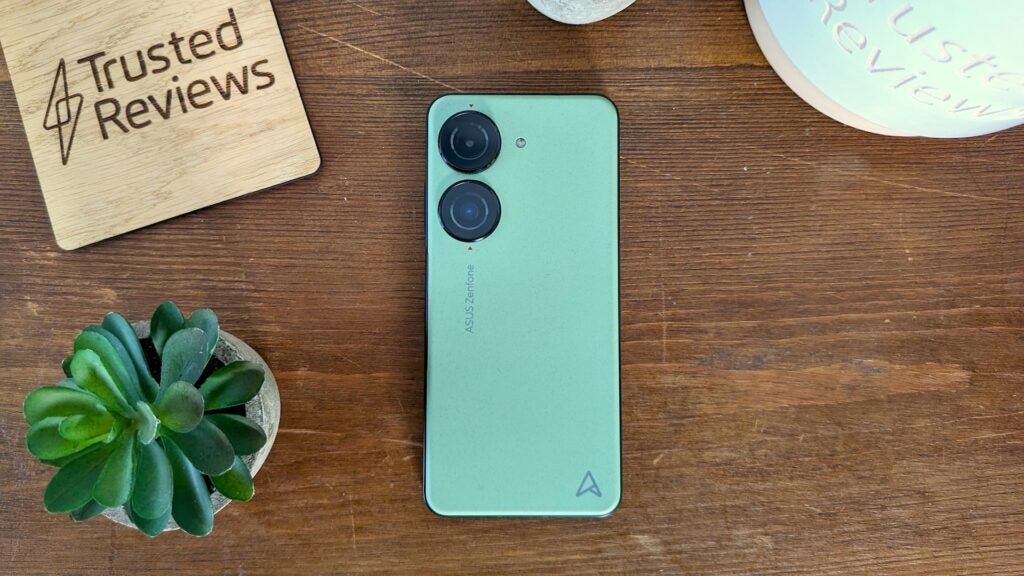
Asus Zenfone 10
Best small phone
Pros
- Top-end performance
- All-day battery life
- Six-axis gimbal stabilisation steadies photo and video capture
- Pocketable design
Cons
- Bio-plastic rear feels a little cheap
- Same main camera sensor as Zenfone 9
- Relatively slow 30W charging
If you’ve been looking for a handset that’s slightly smaller than the others on this list – one that you could even use with just one hand, for instance – then you can’t do much better than the excellent Asus Zenfone 10.
The smartphone measures in at a compact 5.9 inches, but don’t let that fool you; this is very much a premium device. From the Snapdragon 8 Gen 2 that allows it to compete with much more premium options, to the 50MP main shooter with unique six-axis gimbal stabilisation that allows for blur-free photos and super-smooth videos, the ZenFone 10 is a capable option.
It also delivers some of the best OS customisation we’ve seen, with the option to pick and choose between Asus’ ZenUI and stock Android 13, and there are plenty of handy tweaks available too. It’s just a shame that it only offers two OS upgrades alongside its four years of security patches.
Still, if you find that your hands aren’t quite big enough to wield some of the cumbersome phablets that have been mentioned above, then the 5.9-inch screen on this device could suit you right down to the ground.
Reviewer: Lewis Painter
Full review: Asus Zenfone 10 review

Google Pixel 8a
Best mid-range phone
Pros
- Manageable size
- IP rating and Qi charging
- Great camera (for the price)
- Seven years of software updates
- Clever AI-infused software
Cons
- Screen is far from the best
- The battery will never last more than a day
- Slow charging
The Pixel 8a is a compact Android phone with an excellent camera, Google’s fantastic software and a price tag that won’t break the bank, even if it is slightly more expensive in some regions this year.
Despite its solidly mid-range price tag, it matches many of the essential features of the more expensive Pixel 8 and boasts several advantages over the Pixel 7a. That includes a refreshed design with a matte finish that closely resembles the top-end Pixel 8 Pro, Google’s flagship-level Actua display tech and, of course, the same Tensoe G3 chipset as its premium siblings.
The Pixel 8a also has an impressive camera with the returning 64MP sensor that continues to produce excellent images in various lighting conditions and accurately captures skin tones. At this price, there isn’t a better phone included on this list.
Then there’s all the AI smarts; you’ll be able to improve group selfies with Best Take, remove people from the background with Magic Eraser or go full genAI with Magic Editor – all features you’ll also find on the top-end Pixels. There are other AI-infused elements throughout the OS too, allowing the phone to transcribe recordings and even take calls for you in certain regions.
Plus, with a whopping seven years of OS upgrades guaranteed, it’ll continue to get even more features and functionality over time. That’s a massive boost compared to the three or four upgrades you’ll get from competitors, if you’re lucky.
The 6.1-inch display has had a boost, both in terms of speed and overall brightness at 120Hz and 2000nits, though it remains a weak point with oddly thick bezels compared to practically every other mid-ranger on the market.
The Pixel 8a’s battery life also leaves much to be desired, and charging can be slow. Though the phone can typically last a day, users may need to recharge quickly on busy days with heavy screen usage – something our reviewer had to do on a few occasions.
Reviewer: Max Parker
Full review: Google Pixel 8a Review

Motorola Edge 50 Fusion
Best value
Pros
- Sleek, stylish design
- Strong 144Hz display
- Snappy main camera
Cons
- Some bloatware
- No HDR10 support
The Motorola Edge 50 Fusion is a prime example of not having to break the bank to get a top-tier smartphone experience.
Despite coming in at just £349, it offers staples of flagship smartphone design including a curved screen, IP68 dust and water resistance and a choice of vegan leather or frosted plastic finishes available in some pretty striking colours that immediately make it stand out.
The expansive 6.7-inch OLED screen is a real highlight of the phone, boasting the vibrant colours and deep blacks the screen tech is known for, along with a super fast 144Hz refresh rate ideal for gaming and super-smooth scrolling alike.
We were also impressed by the camera system on offer, comprised of a 50MP main sensor complete with OIS, a 13MP ultrawide and a 32MP selfie camera, and with a 5000mAh battery and 68W fast charging capabilities, you can get a full charge that’ll last all day in under an hour.
Although not the strongest chipset around, the combination of the Snapdragon 7s Gen 2 and a healthy 12GB of RAM delivered a solid everyday smartphone experience. It’s just not all that suited to gaming, rather ironically considering the 144Hz screen.
Reviewer: Jon Mundy
Full review: Motorola Edge 50 Fusion review
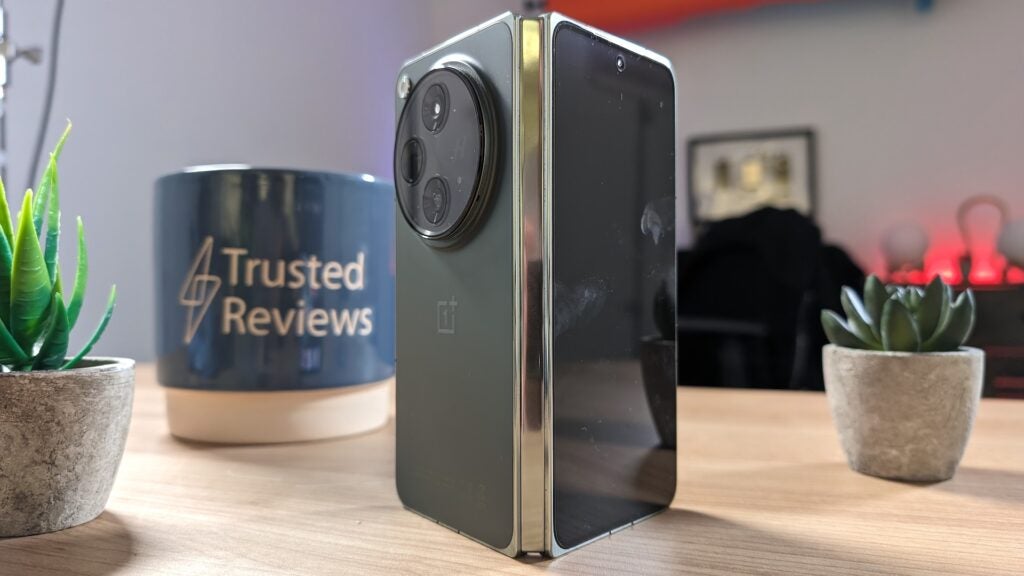
OnePlus Open
Best book-style foldable
Pros
- Solid foldable hardware with minimal display crease
- Custom foldable camera tech
- Unique Open Canvas multitasking software
- True fast charging capabilities
Cons
- IPX4 water resistance isn’t the best
- Still hefty at 245g
If Samsung set the path for book-style foldables with its Galaxy Z Fold range, it was the OnePlus Open that finally delivered on that original vision of a fully-featured productivity device.
Learning from the issues that plagued earlier devices in this category, OnePlus made sure that the Open was a sturdy phone at launch. It has a satisfyingly premium build and almost no visible crease on the inner display, so you don’t have to stay within a precise viewing angle in order to fool your eyes into thinking it’s not there.
Speaking of displays, the inner 7.82-inch ProXDR AMOLED screen is stunning, and offers up a great viewing experience in apps like YouTube or Netflix. Even the outer 6.3-inch ProXDR AMOLED display is similar to what you’d find on a traditional flagship phone, so you won’t be settling for a lesser experience if you just want to check on some notifications.
What really cements the experience however is OnePlus’ terrific Open Canvas software. This unique bit of tech has allowed OnePlus’ OxygenOS to optimise itself for the foldable experience, allowing for multitasking that lets you jump between full-screen apps quickly as they sit just off to the side and can be accessed with a quick tap.
This is in addition to split-screen multitasking which is great for researching and typing up documents at the same time, handy for when you’re away from your laptop. In this regard, you can get far more done on the OnePlus Open than almost any other phone.
What’s surprising is that in spite of OnePlus’ focus to optimise its software, the company hasn’t fallen short in the one area where foldables tend to stumble: the cameras. With a trio of sensors on the back, led by a main 48MP wide camera, the OnePlus Open can capture some genuinely impressive shots, with tons of detail to boot.
Reviewer: Lewis Painter
Full review: OnePlus Open review
FAQs
While not vital, most of these phones are 5G, so they are futureproofed.
The Samsung Galaxy S24 Ultra is the best Android phone available right now.
The Samsung Galaxy S24 Ultra and Google Pixel 9 Pro XL are tied for the best all-round camera we’ve found on an Android phone, but the Vivo X100 Pro wins in low-light conditions.
We also considered…
Comparison Specifications
UK RRP
USA RRP
EU RRP
Manufacturer
Screen Size
Storage Capacity
Rear Camera
Front Camera
Video Recording
IP rating
Battery
Wireless charging
Fast Charging
Size (Dimensions)
Weight
ASIN
Operating System
Release Date
First Reviewed Date
Resolution
HDR
Refresh Rate
Ports
Chipset
RAM
Colours
Stated Power
Trusted Reviews test data
We run all the phones we review through a number of tests to gauge performance and other aspects, like screen quality and battery life.
Geekbench 6 single core
Geekbench 6 multi core
Max brightness
1 hour video playback (Netflix, HDR)
Battery drain 60-min (music streaming online)
Battery drain 60-min (music streaming offline)
30 minute gaming (intensive)
30 minute gaming (light)
Time from 0-100% charge
Time from 0-50% charge
60-min recharge (included charger)
30-min recharge (included charger)
15-min recharge (included charger)
30-min recharge (no charger included)
15-min recharge (no charger included)
3D Mark – Wild Life
GFXBench – Aztec Ruins
GFXBench – Car Chase

